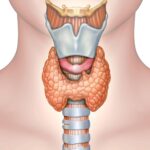- Home
- GYNECOLOGY/OBSTETRICS
- Dysmenorrhea

Dysmenorrhea refers to the pain associated with menstruation and is one of the most common gynecological complaints among women of reproductive age. This condition can significantly impact quality of life and may require comprehensive evaluation and management.
Etiology
Dysmenorrhea can be classified into two main types: primary and secondary.
- Primary Dysmenorrhea:
- Occurs in the absence of any underlying pelvic pathology.
- Typically begins within a few years after menarche and may improve with age or after childbirth.
- Associated with the release of prostaglandins from the endometrium during menstruation, which leads to increased uterine contractions and subsequent ischemia, causing pain.
- Secondary Dysmenorrhea:
- Results from identifiable pelvic pathology.
- Common causes include:
- Endometriosis: Ectopic endometrial tissue leads to inflammation and scarring.
- Uterine Fibroids: Benign tumors that can distort the uterine cavity and cause pain.
- Adenomyosis: Invasion of endometrial tissue into the myometrium, leading to painful menstruation.
- Pelvic Inflammatory Disease (PID): Infection leading to inflammation of the reproductive organs.
- Cervical Stenosis: Narrowing of the cervix can impede menstrual flow, causing pain.
- Ovarian Cysts: Functional or pathological ovarian cysts can contribute to dysmenorrhea.
Classification
- Acute vs. Chronic:
- Acute Dysmenorrhea: Pain occurring during menstruation that resolves within a few days.
- Chronic Dysmenorrhea: Persistent or recurrent pain associated with menstruation lasting for multiple cycles.
- Functional vs. Structural:
- Functional Dysmenorrhea: Pain without identifiable pathology, typically primary dysmenorrhea.
- Structural Dysmenorrhea: Pain due to identifiable structural abnormalities (e.g., fibroids, endometriosis), typically secondary dysmenorrhea.
Clinical Presentation
- Symptoms:
- Pelvic Pain: Crampy, lower abdominal pain that may radiate to the lower back or thighs.
- Timing: Pain typically begins a few hours to a day before menstruation and can last for 2 to 3 days.
- Associated Symptoms: Nausea, vomiting, diarrhea, fatigue, headache, and mood changes may occur.
- Severity:
- Pain severity can vary from mild discomfort to debilitating pain, affecting daily activities, work, and social life.
Diagnosis
- History and Physical Examination:
- A detailed menstrual history, including the onset, duration, character of pain, and associated symptoms.
- Physical examination focusing on the abdomen and pelvic examination to identify any abnormal masses or tenderness.
- Laboratory Tests:
- Pregnancy Test: To rule out pregnancy-related complications (e.g., ectopic pregnancy).
- STI Testing: If pelvic inflammatory disease is suspected.
- Imaging Studies:
- Ultrasound: Transvaginal or abdominal ultrasound can evaluate for structural abnormalities such as fibroids or ovarian cysts.
- MRI: May be indicated for evaluating endometriosis or other pelvic pathologies.
- Laparoscopy: In cases where a definitive diagnosis is required and non-invasive measures have failed, diagnostic laparoscopy can be performed to visualize the pelvic organs directly.
Management
- Non-Pharmacologic Management:
- Lifestyle Modifications: Regular exercise, heat therapy (e.g., heating pads), dietary changes, and stress reduction techniques.
- Physical Therapy: Pelvic floor therapy may benefit some women.
- Pharmacologic Management:
- NSAIDs: Nonsteroidal anti-inflammatory drugs (e.g., ibuprofen, naproxen) are the first-line treatment for primary dysmenorrhea and should be taken at the onset of symptoms.
- Hormonal Contraceptives: Combined oral contraceptives, hormonal IUDs, or progestin-only methods can reduce menstrual pain by suppressing ovulation and reducing endometrial buildup.
- Gonadotropin-Releasing Hormone (GnRH) Agonists: Used for endometriosis-related dysmenorrhea to induce a temporary menopausal state.
- Surgical Management:
- Laparoscopic Surgery: Indicated for severe cases of secondary dysmenorrhea due to endometriosis, fibroids, or other structural abnormalities that do not respond to medical therapy.
- Hysterectomy: Considered in cases of significant structural abnormalities or when other treatments have failed and when childbearing is complete.
Complications
- Impact on Quality of Life: Dysmenorrhea can lead to significant absenteeism from work or school, decreased productivity, and impaired social interactions.
- Psychological Effects: Chronic pain can lead to anxiety, depression, and decreased overall well-being.
- Infertility: Secondary dysmenorrhea due to endometriosis can be associated with infertility issues.












